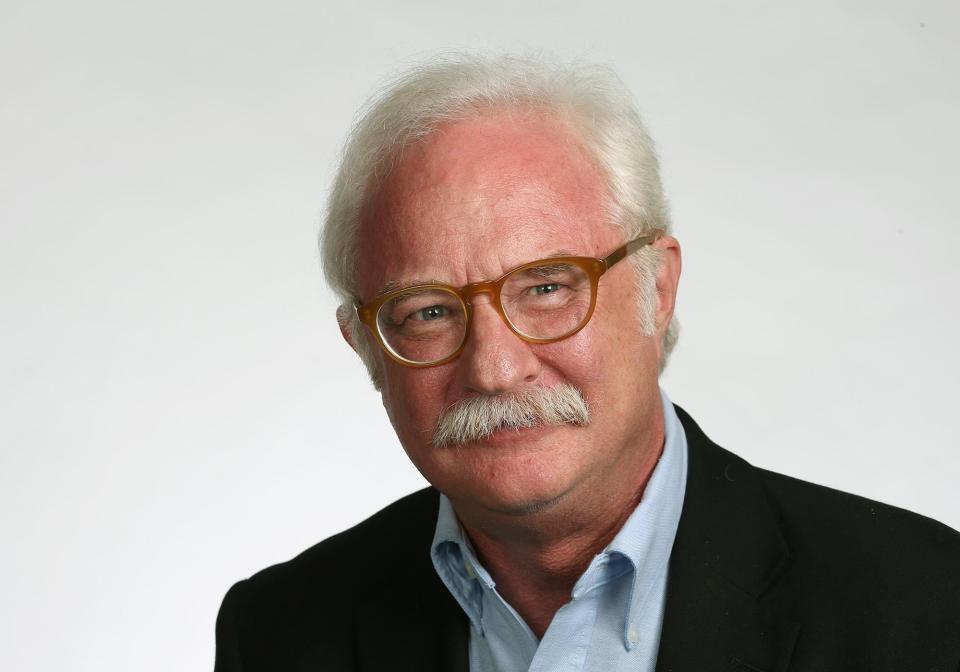Mark Lane: Beach driving fight goes on. And on and on . . .
The truce in the beach-driving standoff has been broken again, and Volusia County can start tying itself in knots over the issue one more time.
The Volusia County Council voted 4-2 Wednesday against taking steps toward eliminating a no-driving zone that has been in effect for the past 24 years. But since Council Members Troy Kent voted “no” only for procedural reasons, expect the issue to be taken up at future meetings.
More: Mark Lane: Beach driving is Volusia's never-ending political argument
More: Proposal to explore more driving on Volusia beaches halted for now, but it will be back
More: In Volusia, federal permit largely steers beach driving, not political whim
Beach driving has long been the third rail of Volusia County politics, an emotional issue with a stark divide between pro- and anti-beach-driving forces. Depending on who's talking, driving on the beach is either our most important tourist draw and a deeply felt part of our area’s identity or it’s a baffling local custom that no sane place would continence because it's so obviously dangerous, environmentally destructive, and turns off many visitors.

Our politicians love to go around and around on this issue until everyone gets tired and gives up.
The result has been a standing compromise, one I support: a mixed-use beach. A beach with places where beach walkers and kids can hang out safely but with designated zones where cars still roll. To ban cars entirely would make long stretches of beach hard to access; to allow cars everywhere turns the place into a big, ugly parking lot where you bring kids at your peril, wildlife gets killed and the beachscape gets torn up. Fortunately, it’s a big beach with room for multiple uses.
Even if the County Council decides it wants to reverse past Council decisions limiting beach driving, the action would still face other legal hurdles. A 1985 state law discourages beach driving in Florida, allowing it in only a few places where it existed upon enactment but not allowing it to expand. The Florida Legislature would need to create an exception just for Volusia County.
That would be a heavy lift since legislators tend not to want to weigh in on divisive local issues. There’s nothing in it for them, so they tend to pass local acts only when communities and their elected officials are united in demanding them. And this is hardly a unifying issue.
Then, there is the matter of the sea turtle incidental take permit. An incidental take permit allows governments to do things that harm endangered species as long as they take other actions to limit the damage. In Volusia County’s case, continuing to allow beach driving means placing limits on driving and parking, removing ruts and tire tracks that can trap turtles, providing off-beach parking, and monitoring beach wildlife. Expanding beach driving would likely need a sign-off by the U.S. Fish and Wildlife Service.
And something to think about in the long term: Volusia County’s take permit expires at the end of 2030. If it is to be renewed and beach driving is to continue into the next decade, the county will need to prove it’s a good steward of beach wildlife. Something that would be hard to do if the County Council starts getting all gung-ho about running more cars and trucks everywhere.
Supporters of expanded beach driving have tied the economic decline of the core beachside to no-driving zones. They spoke of the 1970s-1980s as a Golden Age that died as soon as cars came off the beach. Bring back cars everywhere and it will be 1975 again!
This is a bit of revisionist local history that pretends the beachside was never hurt by the excesses of the spring breaks from 1986 to 1993 and the transformation of Main Street into a Bike Week specialty street. The decline in the Boardwalk area certainly was well underway by the late 1970s.
Add to that the hurricanes of 2004 and a statewide real estate bubble that burst just before the Great Recession and crushed a lot of beachside investment. The bankruptcy of Bray & Gillespie alone put no fewer than 35 beachside properties into a legal deep freeze with some ending up as oceanfront vacant lots. The Daytona Beach Pier was closed for repair from 2009 to 2012. And don’t forget the role of the developer of Ocean Walk, Bill Geary, who ended up serving federal prison time. He was one of the developers who spent the 1990s and early 2000s promoting big, big plans for the central beachside that didn’t pan out. Game changers all!
This was a lot of hard luck, litigation and business failure for a few blocks of oceanfront real estate to absorb. Not being able to park the minivan on the sand barely enters the equation.
Neither a car-free beach nor a return to a full-out sandy highway is likely to happen, which is what makes this endless debate so tiresome. The emotions it generates get in the way of coming up with real plans for the future. Wishing this were still the Disco Era is not an economic strategy.
Mark Lane is a News-Journal columnist. His email is mlanewrites@gmail.com.

This article originally appeared on The Daytona Beach News-Journal: Mark Lane: Beach driving fight goes on. And on and on . . .

